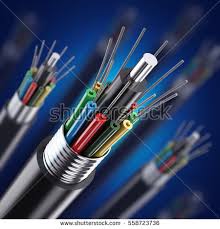Disposable vs. Reusable Medical Cables
Posted on

Medical Hand Piece Cables
Cables for medical hand pieces must carry the power, control, sensor and data to and from the hand piece. The cable may be as simple as a two-conductor cable, providing power to a cut & cauterize scalpel or a multi-conductor power, control and sensor cable used on an orthopedic surgery device. Cables for handheld medical lasers likely contain lumen for cooling. Ablating hand piece cables can also contain lumen for irrigation and suction removal.
Disposable Medical Cables
Disposable medical cables are made from the lowest cost materials that will meet the design needs of the device. Conductor cost is dictated more by the number of strands used to make the conductor. The higher the strand count the more flexible the wire becomes. A marketing trade-off is often made for disposable cables, i.e. increase stiffness can be tolerated by the need to hold cost down. 7 or 19 strand conductors can be used, where in re-useable cables the strand count can be well over 50. The use of platings is reviewed and bare copper is the most often used. Tin plating is used only to enhance solderability. Crimping the wires is often the cheapest means of terminating the conductor. Silver plating is rarely used for disposable cables. Conductor sizes are determined by the current needs of the device.
Insulation and jacket materials are chosen by cost. Low cost materials such as Poly Vinyl Chloride (PVC) or Thermo Plastic Elastomers such as poly urethane are often used. Polyethylene can be used as insulation. Insulation and jacket thickness are determined by the voltage ratings of the signals in the cable.
Shields, when required, are usually of a spiral type rather than braid to hold the cost down. Spiral shields may lose shield effectiveness during repeated flexing, but the number of flexes for disposable cables is limited.
Jacket colors usually are chosen by the program. The need for gamma sterilization may limit the color shades available. Colors can change during gamma sterilization and are usually required to be stable for less than 10 cycles to allow for re-sterilization when repackaging is needed.
Re-useable Medical Cables.
Medical cables designed for re-useable devices have to use materials that will withstand several cycles of sterilization by alcohol based agents or autoclaves.
Conductors are made from high strand count conductors for maximum flexibility and often they are made from high strength copper alloys. The size of the conductors is determined by the current they must carry to the device. To withstand the rigors of sterilization, plating’s of tin or silver plating may be required.
Insulation must also withstand the rigors of sterilization and are often either Teflon’s such as FEP, PFA or Tefzel® or Silicone Rubber. The use of lower cost materials may be made on a case by case basis.
When shields are required, they must be made from materials resistant to many sterilization cycles and are often silver plated copper or silver plated high strength copper alloys. Shield construction is usually of a braid rather than a spiral, as spiral shields can move during flexing and compromise the shielding effectiveness.
The cable jackets are made from Santoprene™ TPE which is good for up to 100 cycles of autoclaving, or Silicone Rubber. For assistance with custom wire & cable design, contact a design expert at Calmont Wire & Cable
